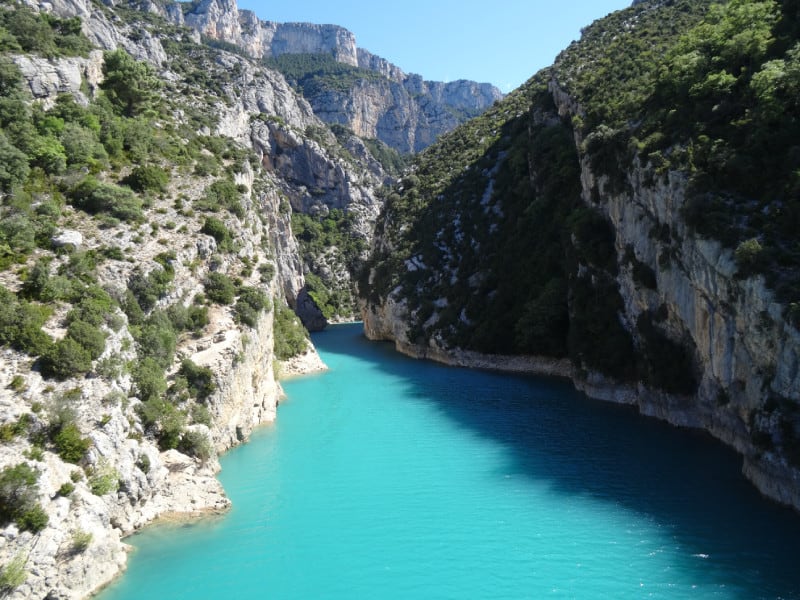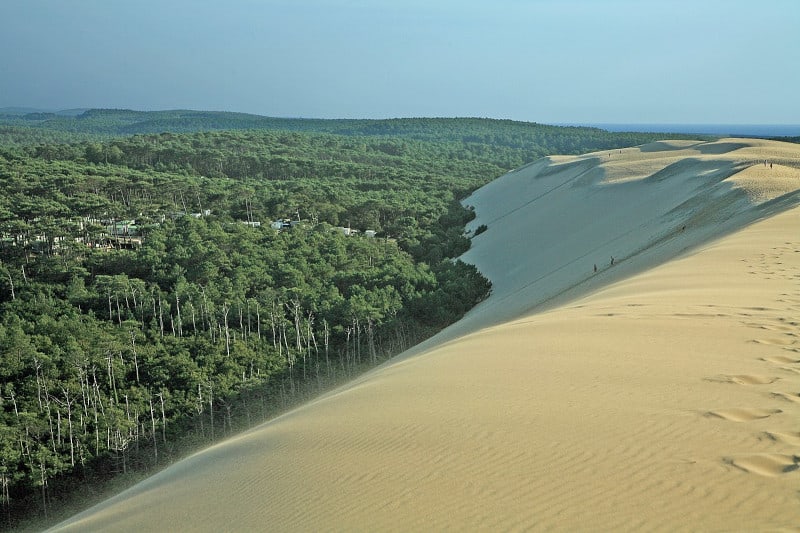Dune du Pilat Facts
- This marvelous work of natural processes most frequently goes by the name of the Dune du Pilat in the language of the region it appears in. In that same language, it also sometimes goes by the alternate, though quite similar, name of Grande Dune du Pilat.
- The english name for the remarkable feature, though, remains extremely similar, with only a slight difference. That’s due to a grammatical similarity in the two languages. The name for the feature in that language, therefore, lists as the Dune of Pilat.
- Regardless of the name used to refer to it, however, it’s a fascinating product of time and natural processes. It’s also, understandably, long intrigued the local population of the region. Precisely when local inhabitants discovered it remains unknown, though.
- Archaeological evidence indicates, though, that humans visited and made use of the site at least as far back in time as the Bronze Age. That’s because artifacts dating back to roughly 800 BC have been discovered in the sands at the approximate base of the dune.
- The gorgeous Dune du Pilat now constitutes an extremely popular tourist destination in the region. More precisely, more than 1 million tourists per year visit the amazing site, on average. That places it among the most visited in the entire country it formed in.
- That popularity, however, understandably endangers the stability of the formation. Fortunately, though, the local government undertook steps to provide it with at least a measure of protection. In 1994, the formation became a formally protected region.
Related Articles



Dune du Pilat Physical Description
As can easily and clearly be seen, the sheer size of the formation represents the most impressive characteristic of the breathtaking Dune du Pilat. Indeed, it boasts some world-class measurements. These, however, only serve to augment its beauty and grandeur.
It bears mentioning and remembering, though, that, due to its very nature, the dimensions of the formation routinely change. Fortunately for those of us who appreciate its natural beauty, such changes typically amount to no more than minor alterations.
Its overall measurements typically remain essentially unchanged over time. The astonishing dune extends along the coastline for a distance of approximately 1.67 mi (2.7 km). From east to west, though, its average width measures roughly an impressive 1,640 ft (500 m).
Combined with its average depth, these already incredible dimensions further provide it with an astounding total average volume. In point of fact, the formation boasts an average volume equaling roughly 2,118,880,003 cubic feet (60,000,000 cubic meters)!
The mind-blowing beauty of the Dune du Pilat also contains yet another eye-catching measurement. That’s due to the equally impressive height it attains. That’s because of the fact that, at its highest point, the formation attains a height of roughly 349.7 ft (106.6 m).
Dune du Pilat Location, Formation, and History
The remarkable formation named the Dune du Pilat formed in a region of the world already well known for its bountiful natural splendor. That’s because it formed in a portion of the continent of Europe. Every continent has its wonders, and Europe’s no exception.
This specific feature, though, formed in the beautiful country of France, in the western portion of the continent. There, furthermore, it appears in the La Teste-de-Buch commune. This, in turn, lies in the Arachon Bay region, roughly 37.3 mi (60 km) from Bordeaux.
Precisely how long it took for the dune to reach its current size presently remains undetermined by scientists. Research does indicate, however, that it’s formation began approximately 4,000 years ago. In geological terms, therefore, it’s actually a young structure.
The intriguing site formed due to the actions of the strong, prevalent Atlantic winds. These actually eroded sand from the seaward side, only to deposit them on the landward side. This further has the effect of the dune inexorably moving inland over spans of time.
This action slowly but surely buried the leading edge of the relatively dense pine forest just inland. That action, in fact, also continues to this very day. In the process, even maps of the local area have had to be redone several times in recent centuries, beginning in 1708.
In the distant past, furthermore, the Dune du Pilat served as the site of several protohistoric camps. These, evidence indicates, dealt with the mining of sea salt. It’s also possible that actions connected to these efforts further accelerated the growth of the stunning site.
Features Sharing Its Region



Check out our other articles on Earth’s Countless Amazing Amphibians, Giant Wood Moth, Carbet Falls, Shoebill, Yellow Throated Marten, Black Witches’ Butter, Mekong River, Saltwater Crocodile












Leave a Reply